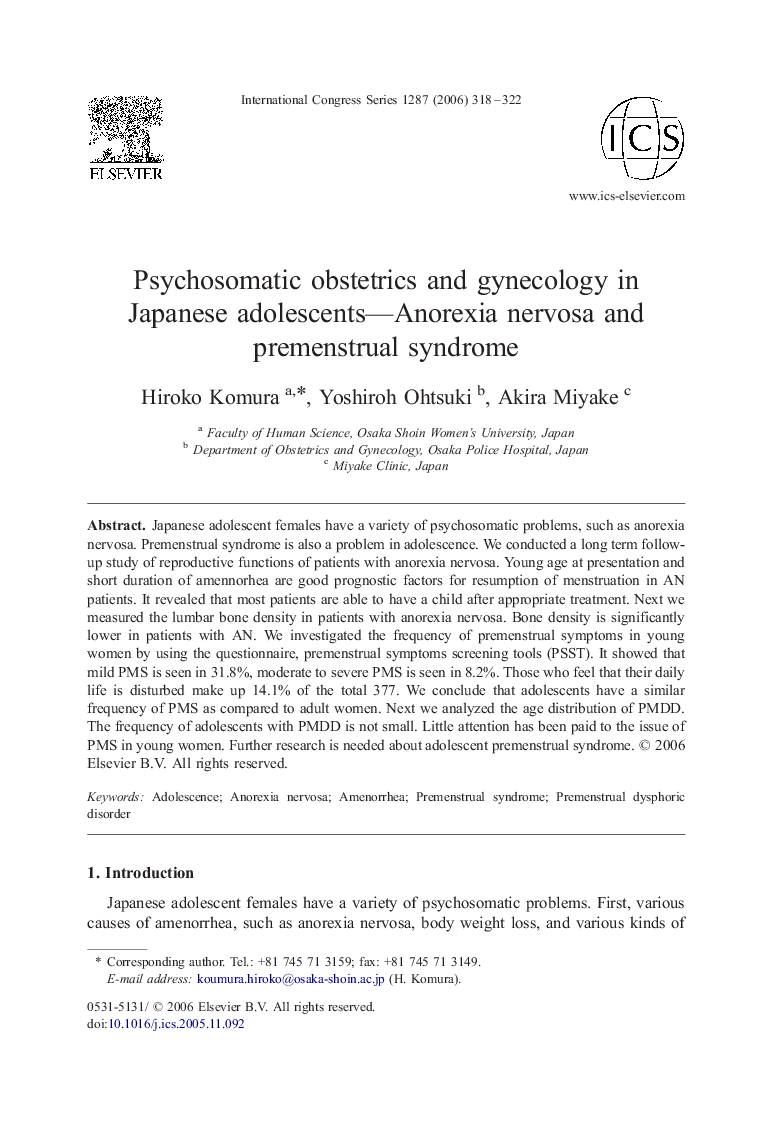| Article ID | Journal | Published Year | Pages | File Type |
|---|---|---|---|---|
| 2577261 | International Congress Series | 2006 | 5 Pages |
Abstract
Japanese adolescent females have a variety of psychosomatic problems, such as anorexia nervosa. Premenstrual syndrome is also a problem in adolescence. We conducted a long term follow-up study of reproductive functions of patients with anorexia nervosa. Young age at presentation and short duration of amennorhea are good prognostic factors for resumption of menstruation in AN patients. It revealed that most patients are able to have a child after appropriate treatment. Next we measured the lumbar bone density in patients with anorexia nervosa. Bone density is significantly lower in patients with AN. We investigated the frequency of premenstrual symptoms in young women by using the questionnaire, premenstrual symptoms screening tools (PSST). It showed that mild PMS is seen in 31.8%, moderate to severe PMS is seen in 8.2%. Those who feel that their daily life is disturbed make up 14.1% of the total 377. We conclude that adolescents have a similar frequency of PMS as compared to adult women. Next we analyzed the age distribution of PMDD. The frequency of adolescents with PMDD is not small. Little attention has been paid to the issue of PMS in young women. Further research is needed about adolescent premenstrual syndrome.
Related Topics
Life Sciences
Biochemistry, Genetics and Molecular Biology
Molecular Biology
Authors
Hiroko Komura, Yoshiroh Ohtsuki, Akira Miyake,
